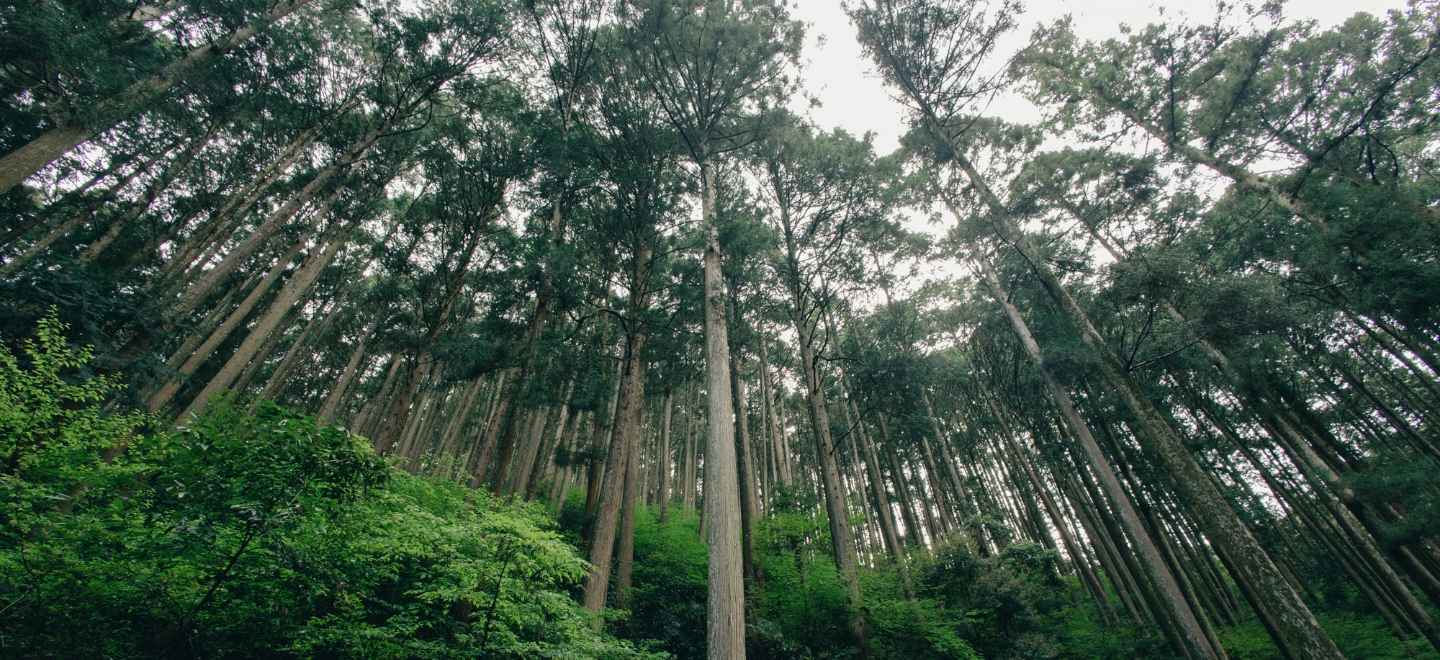【Designer Members】
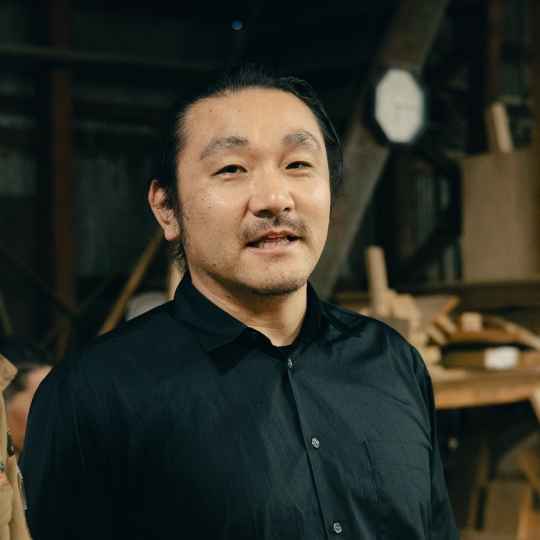
Sano Fumihiko
Architect and artist. Born in Nara Prefecture in 1981. Apprenticed as a Sukiya carpenter at Nakamura Sotoji Construction in Kyoto. After working at a design office, he became independent in 2011. In 2016, he travelled to 16 countries around the world as part of a cultural exchange envoy of the Agency for Cultural Affairs. He has been actively engaged in cross-disciplinary activities in Japan and overseas, such as architecture, interiors, products, and installations, with the aim of cultivating new values for the cultures of various regions.
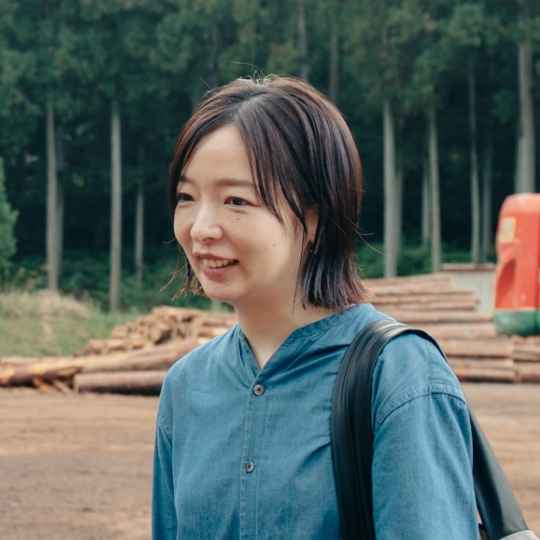
Tatsuno Shizuka
Creative Director and Designer. Born in 1983. After graduating from Kingston University in London with a degree in Product and Furniture, she established a design office in Tokyo in 2011. Her strength lies in exploring the potential hidden in things, sublimating and visualizing them, and creating practical tools and emotive objects. Her activities range from product design to art direction, food design, and art production to go beyond conventional frameworks.
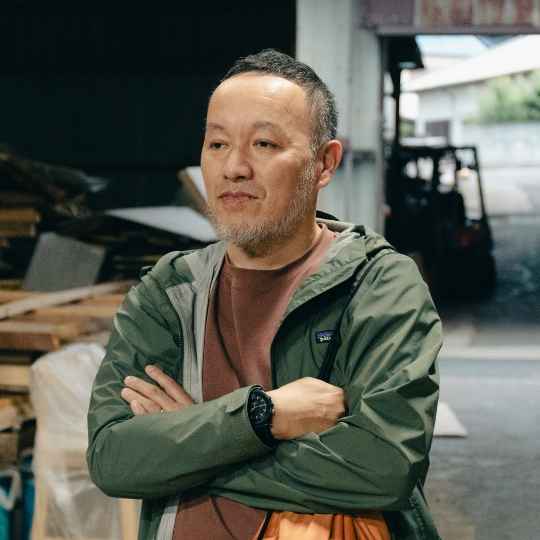
Matsui Takashi
Born in 1970 in Osaka, he is a director and product designer at GRAF, a company that manufactures and sells furniture while also engaging in product design. He grew up in an environment where his parents ran a shoe store in a downtown shopping district and his father was a shoemaker. After working in charge of antique furniture repair at an architectural design office and interior shop, he started “graf” activities with friends in 1998. He’s in charge of design, focusing on furniture and products.
【Our Guide】
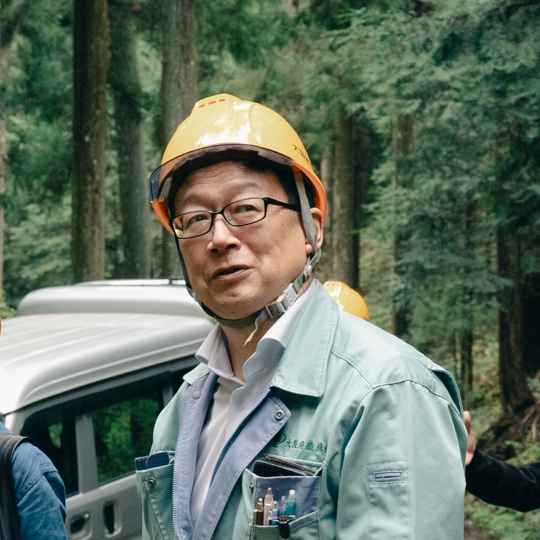
Osaka Prefectural Forestry Association
Managing Director & Minamikawachi Branch Manager
Horikiri Shuhei
Born in 1967 in Kawachi-Nagano City, Osaka Prefecture, he has been working for the forestry association in Osaka for 30 years. While he is an employee of a forestry cooperative, he is also a forest owner who inherited the forest owned by his predecessor. In recent years, he has been actively engaged in the sales and public relations efforts for the local timber, ‘Osaka Kawachi LumberKawachi Lumber”.
How should we honour a tree that has lived for a century? (Sano)
After a brief 15-minute drive from the city of Kawachi-Nagano, we reached the entrance to the mountain. As soon as we arrived, the scenery transformed into a vast expanse of green. Driving further up the mountain, we reached the start of a forest trail, where we were guided on foot.
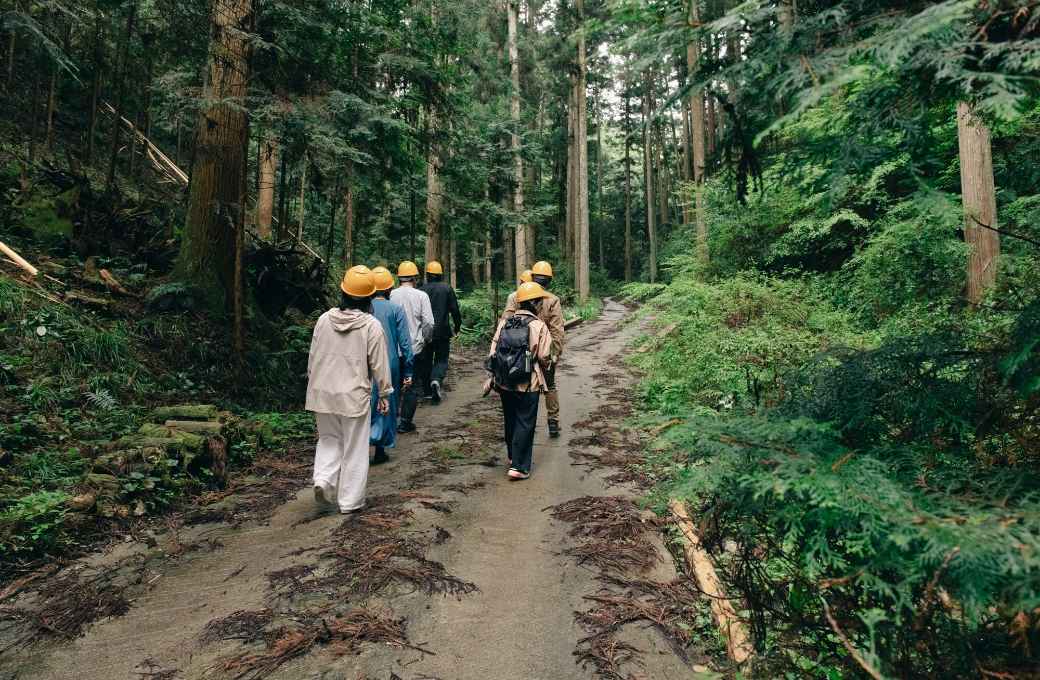
It was the middle of Golden Week and short sleeves were just right, yet inside the forest, the air was cool. The previous night’s rain had cleared, and sunlight filtered through the trees. “It’s sparkling and beautiful,” said Ms. Tatsuno.
The total forested area in Osaka is the smallest among all prefectures. However, within this limited space, the Minamikawachi region boasts abundant forests. The primary cedar and cypress plantations in southern Osaka extend from Minamikawachi to Izumi City. Historical records indicate that timber from this region was used in the construction of Osaka Castle, with a history dating back over 300 years,” explained Mr. Horikiri
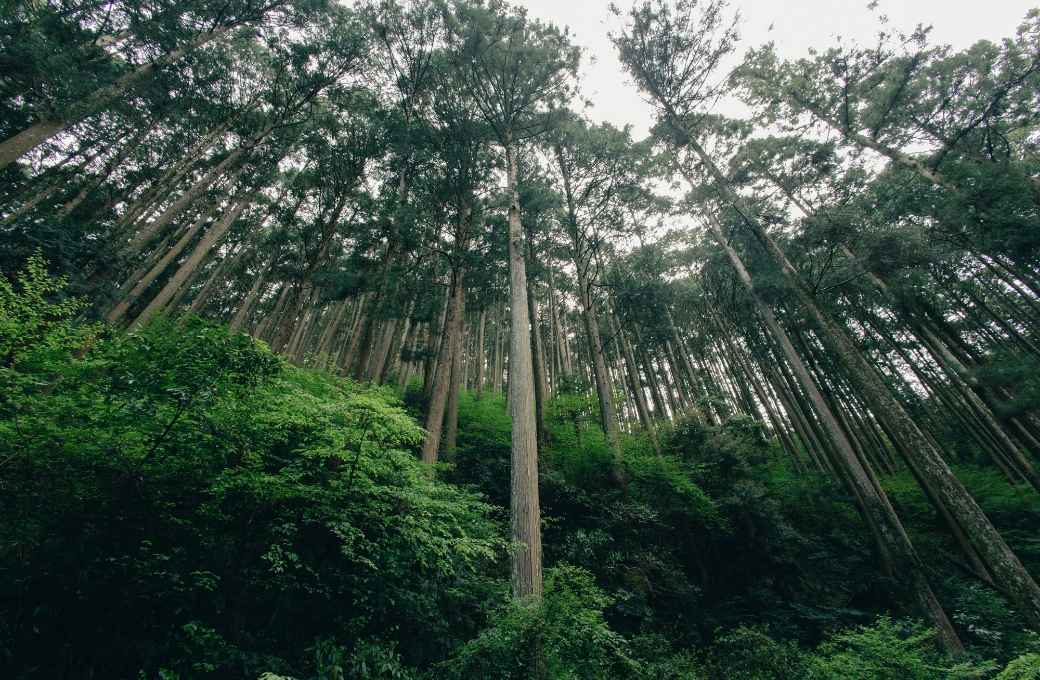
In Kawachi, cedar and cypress trees are densely planted and carefully thinned over time. The cedar and cypress trees lining the forest road grow tall and straight towards the sky. Beneath them, shrubs and smaller trees, about the height of a human, flourish. According to Mr. Horikiri, ‘The owner of this land is deeply committed to forest management. Because the thinning is done appropriately, sunlight filters through, allowing undergrowth to thrive and preventing soil erosion even after rainfall. This is a model forest.
“Would the world be different if people thought tree knots were beautiful? (Tatsuno)
As everyone looked up at the tree, Mr. Horikiri’s said, “That slightly thick tree is around 100 years old” as the others pondered “That’s what a century-old tree looks like”. Mr. Horikiri continues. “I think it’s about 25 meters tall, I used a ladder to prune the branches by hand from one of the young trees. Trees that don’t branch will have more knots. Wood with excessive knots has a lower market value, so we prune them carefully. Even so, only 20% of them have no knots and are usable timber. Wood with a lot of knots, bent or rotten can be turned into wood chips.”
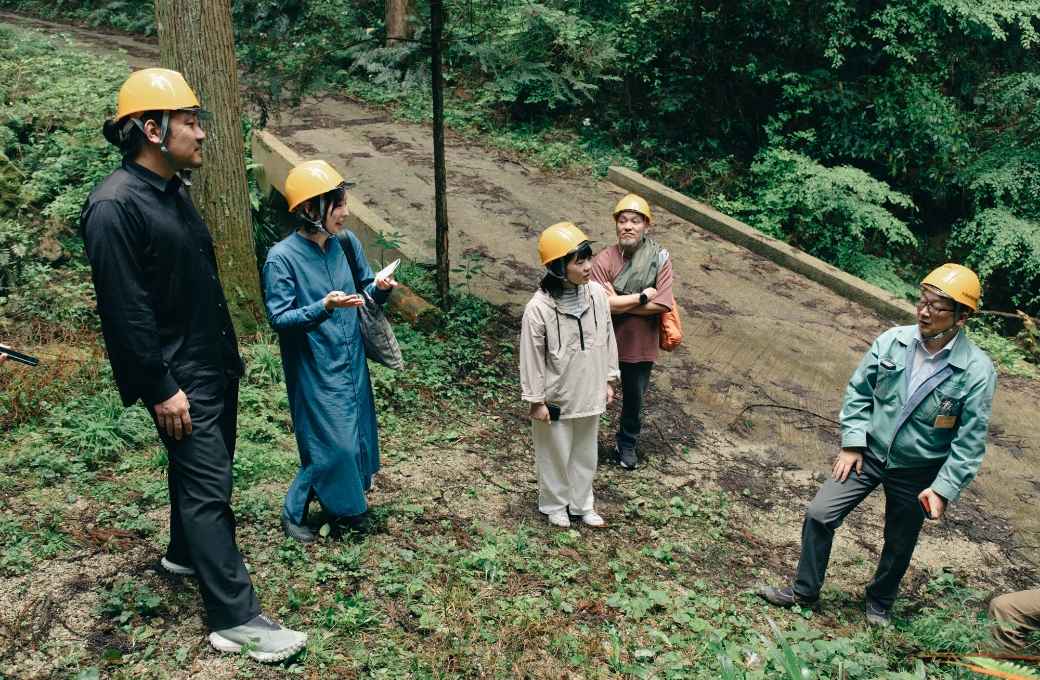
(From left to right: Sano, Tatsuno, Shimamoto, Matsui, Horikiri)
Hearing this, Mr. Sano murmured, ‘It’s heartbreaking to think that a tree that has lived for 100 years might end up as wood chippings. How should we honour that time?’ Ms. Tatsuno added, ‘If people saw knots as beautiful, would the world be different?”.
Mr. Horikiri says that the demand for knotless and “unblemished” materials is now declining. “In the past, knot-free pillars and beams were used for the main structural supports and ceremonial areas in houses, but nowadays, such homes are rarely built. Even though we put in the effort to prune branches and carefully manage the trees, the demand has diminished, which means prices remain low and profits are difficult to generate. This is one of the major challenges that forestry workers and mountain owners face today.” As we descended the mountain, Mr. Horikiri muttered, “We carefully nurture these trees, cut them down, and hope they will be used with appreciation. It’s such a simple thing, but that’s what makes us happiest.”
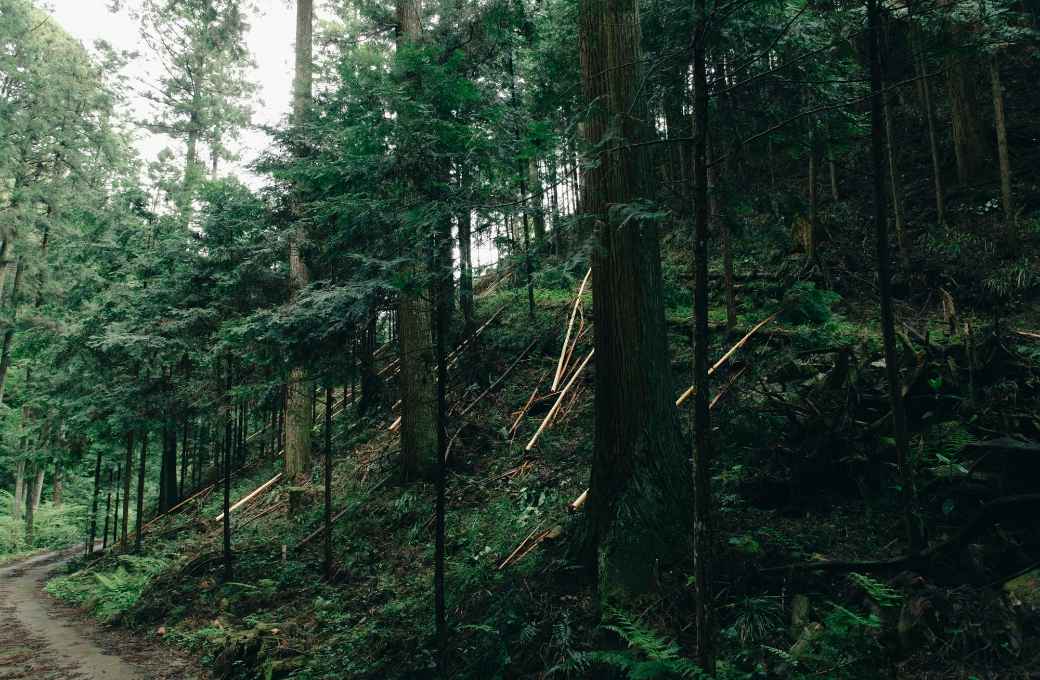
“I want to consider the relationship between trees and people.” (Matsui)
After visiting the forest, our next stop was the raw timber market in Chihaya Akasaka Village, Minamikawachi District. This is the only domestic timber market in Osaka Prefecture, serving as a key distribution hub for timber harvested in the Minamikawachi and Senshu regions. The auction, held once or twice a month, features between 100 and 400 cubic metres of logs.
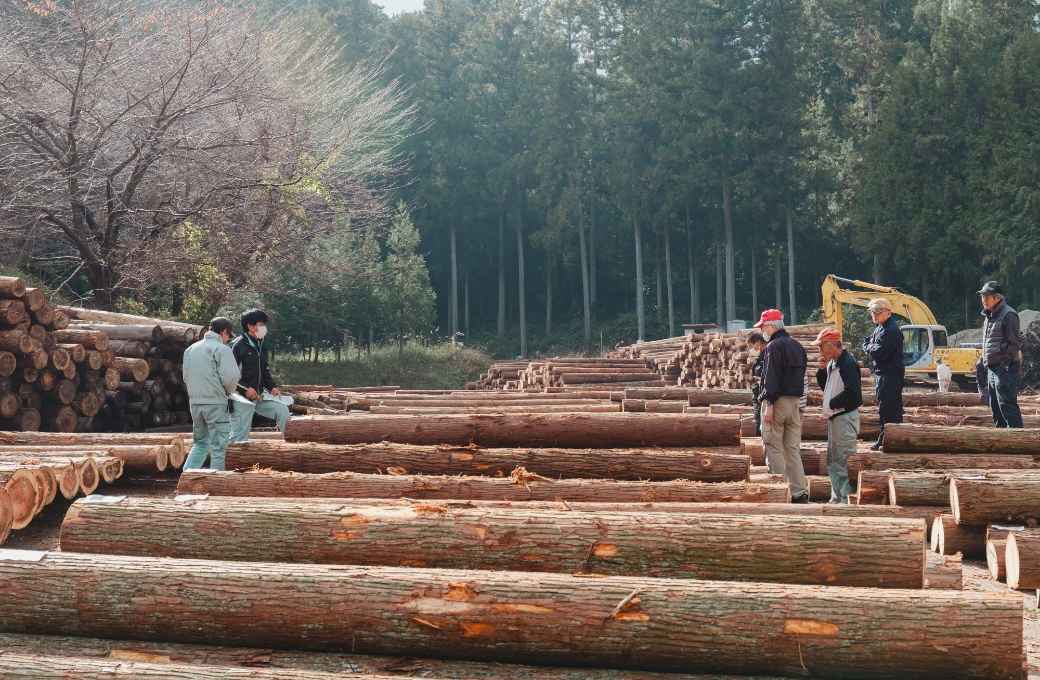
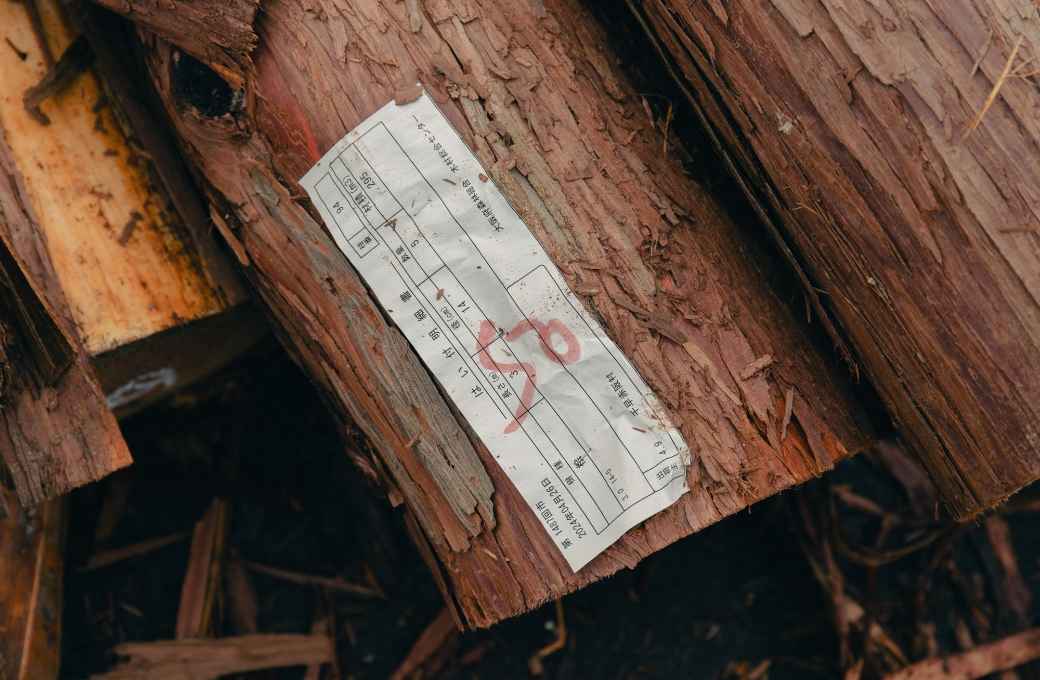
We couldn’t tour the auction market, but there were piles of logs such as cedar and cypress at the site. So we were able to see the rings up close, smell the scent, and touch them. Everyone was taking a closer look at the logs.

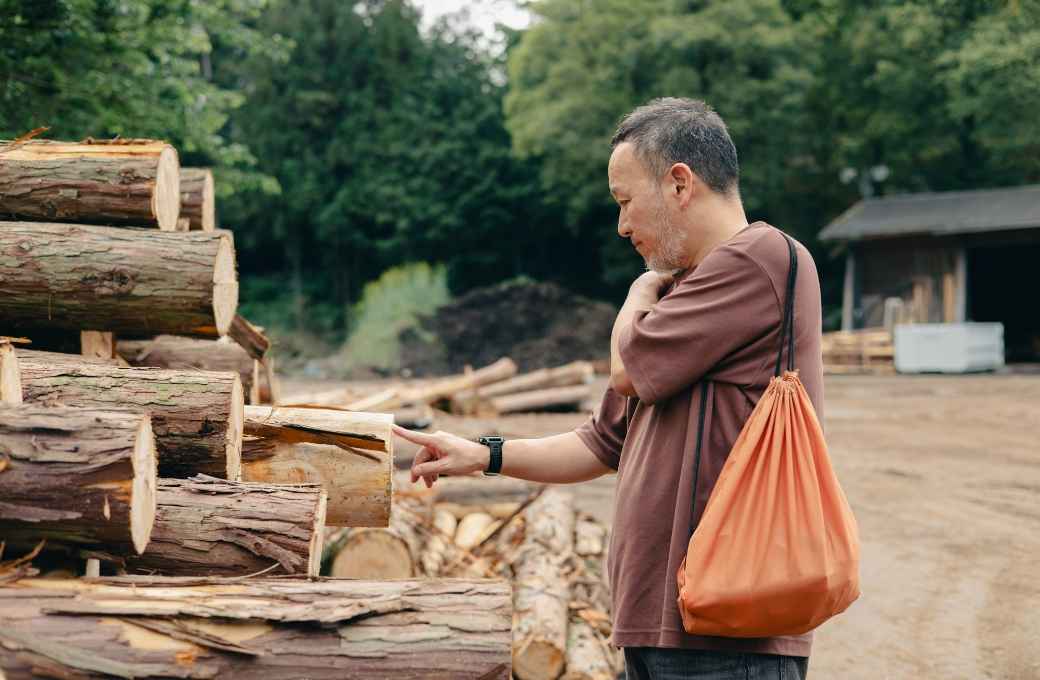
Over the course of a day, the designers explored the forests of Osaka and learned about the current state of the forest. At the end of the day, they shared what they felt today.
Sano
“I don’t think anyone sees trees as bad. People generally have a positive impression of them, but not many actually take an interest in them. Since trees are living beings, each one is unique. I think we should reconsider their value as living creatures”.
Tatsuno
“When I saw a tree in the forest today that had been growing for 25 years, I realised it was younger than me. I wondered what it would look like in 10 years, and I also felt the weight of 50 years of time. You can’t just throw that away. I learned a very simple lesson: we need to cherish trees”.
Matsui
“That’s true. But in reality, even if two trees have lived for the same amount of time, their value can change depending on which mountain they come from. Humans are so arbitrary. I want to reflect on the relationship between trees and people.”
Hattori
“Design is often considered an added value, but I think the key aspect of this project is figuring out how to regenerate value. While it’s important not to get too caught up in meaning, I still want to keep these ideas in mind as we move forward with the project.”
With only one year left until the Expo, we will continue to honour and incorporate the “thoughts and emotions” each person experienced today into our bench design.

